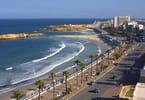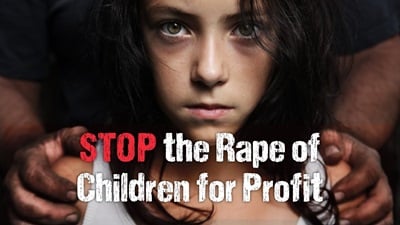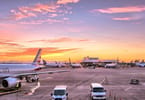PETRA, Jordan // Business is slow at the Indiana Jones Snack Shop near the main entrance to the ancient site of Petra, once described by the BBC as “one of the 40 places you have to visit before you die”.
At this time of year, there should be hordes of tourists to the ancient Nabataean city, by far Jordan’s biggest tourism attraction. But instead, visitors are trickling through and there is little trade to be done by the food stall and the souvenir shops selling Bedouin scarves and stuffed camel toys on the dusty strip.
“It’s our high season now, but it’s not so busy because of what’s happening in the Middle East,” says Auad Mohammad, a shop assistant at the food stall.
Protests have taken place in Jordan, mainly in Amman, but locals blame the unrest in nearby Syria and elsewhere in the region for deterring tourists from spending their holidays in Jordan.
The area’s economy depends on attracting tourists, and months of depressed visitor numbers are taking their toll. Petra normally draws in more than 500,000 tourists each year.
Mr Mohammad says his salary has been cut from 600 Jordanian dinars (Dh3,109) a month to 250 dinars because sales are so poor. He knows of many hotel workers around Petra who have lost their jobs.
But the one bright spot has been an increase in visitors from the Gulf region, particularly over the summer months, with surges during the Eid holiday and before Ramadan, locals say.
The absence of crowds is good for tourists such as Khalid Omar, 35, an engineer from Muscat, who is taking unobstructed pictures of the famous Treasury at Petra.
“I know the region, so I’m not worried by the situation,” he says.
The ministry of tourism in Jordan reported a 26 per cent increase in the number of visitors from the GCC in the first eight months of the year. This contrasts with a 17 per cent decline in European visitors, the figures reported by Jordan’s local press show.
But Nael Raja Al Kabariti, the chairman of the Jordan Chamber of Commerce, says there has been almost a 50 per cent decline in overall tourism this year. But, he says, there was more than a 100 per cent increase in the number of visitors from the GCC over the summer. He explains that Jordan launched a campaign to actively target the GCC market as its industry was hit by the unrest.
The tourism sector is of increasing importance for the country. It had enjoyed steady growth over the past few years until this year. Tourism expenditure reached more than 2.423 billion dinars last year, contributing to 12.4 per cent of Jordan’s economy, according to the country’s ministry of tourism. The sector directly accounted for 41,900 jobs last year.
Back in Petra, just inside the main entrance to the site, Hamzah Falhat, who is one of the workers selling horse rides along the kilometre-long trek to the mouth of the gorge that leads to Petra’s marvels, is also struggling to drum up business.
“People are afraid to come to Jordan,” Mr Falhat says, explaining he would normally charge 12 dinars for the horse ride, but has now cut his prices to 5 dinars because of the lack of tourists.
A tour guide, Ahmad Alid, is also very worried by the decline in tourism, although he thinks things may be starting to pick up slightly.
He says there has been a definite increase in business from the GCC, particularly Saudi Arabia and the UAE. “Most of them used to go to Syria,” he explains. But this is still not enough to compensate for the sharp decline in visitors from Europe, Japan and North America, and he is still down in terms of earnings.
“I spend less money now,” Mr Alid says. “You just buy the necessary things.”
WHAT TO TAKE AWAY FROM THIS ARTICLE:
- Back in Petra, just inside the main entrance to the site, Hamzah Falhat, who is one of the workers selling horse rides along the kilometre-long trek to the mouth of the gorge that leads to Petra’s marvels, is also struggling to drum up business.
- The ministry of tourism in Jordan reported a 26 per cent increase in the number of visitors from the GCC in the first eight months of the year.
- PETRA, Jordan // Business is slow at the Indiana Jones Snack Shop near the main entrance to the ancient site of Petra, once described by the BBC as “one of the 40 places you have to visit before you die”.






















